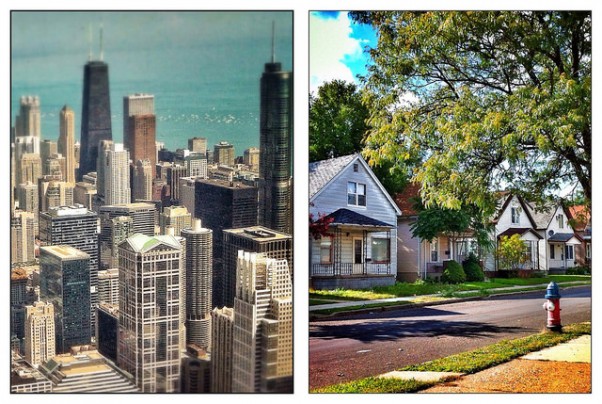Despite more homes being put up for sale in anticipation of the spring home buying season, asking prices are up from last year in 97 of 100 metropolitan areas tracked by Trulia’s Price Monitor. Typically, more homes on the market keeps prices from increasing but, because this spring is expected to be a good one for housing, prices have continued to rise. In fact, asking prices are up 10 percent nationally over the past year and climbed 1.2 percent in March from February’s level. The report also found that price per square foot increased more in cities than in suburban neighborhoods. High-density, urban neighborhoods experienced price increases of 9.8 percent since last year, while homes in the suburbs saw prices rise 9.4 percent. Still, population growth in suburban neighborhoods was stronger than city neighborhoods over the past year. According to the report, this is true because – though more people moved to the suburbs – there is more room for new construction in suburban areas and the ability to create more inventory to meet buyer demand helps moderate price gains. More here.
Tag Archive for Trulia Price Monitor
Prices Rise In 97 Of 100 Largest Metro Areas
Trulia’s Price Monitor is the earliest leading indicator of where asking prices are headed on both a national and local basis. The Monitor can detect price trends at least three months in advance of the major sales-price indexes. According to the most recent release, asking prices were up 11.4 percent in January as compared to one year earlier. In fact, of the 100 largest metropolitan areas, 97 saw asking-price increases from January 2013. Prices were also up on a quarterly and monthly basis. The results show a 1.1 percent price increase from December, which is the strongest one-month gain since June 2013. There was also a 2.1 percent improvement in prices on a quarterly basis. However, quarterly increases remain below spring 2013’s rate, when prices accelerated at the fastest pace since the housing crash. Overall, home prices have risen most in the areas that experienced the largest declines during the most recent recession. More here.
Post-Crash Rebound Fuels 2013 Price Gains
Home prices surged last year but, according to Trulia’s Price Monitor, the increases were a reaction to the housing crash more than the effects of an improved job market and economy. A recent analysis from Jed Kolko, Trulia’s chief economist, explains how the price gains seen throughout 2013 were a direct response to the housing crash. For example, the individual markets that experienced the highest price increases last year were also those that suffered the most severe price declines during the crash. In other words, the markets that had the most ground to make up were the ones with the most significant increases. Now that most areas have largely recovered the losses suffered during the housing crash, price gains should begin to slow. Kolko says – as the housing market continues to recover – factors such as job growth, rather than this recent rebound effect, will lead to more sustainable, and slower, price increases. Trulia’s Price and Rent Monitors measure how asking prices and rents are trending on both a national and local level. In December, home prices were up 11.9 percent over last year and 0.4 percent above the month before. More here.
Report Finds More Evidence of Cooling Price Increases
Home prices rose rapidly through the first half of the year, signaling a rebound and a healthier housing market. But now there is increasing evidence that home prices may be cooling off. According to Trulia’s Price Monitor, asking prices were up 3 percent quarter-over-quarter in September, the smallest gain since February. Jed Kolko, Trulia’s chief economist, said asking prices are the first indicator of where home sale prices are headed and they point to a slowdown. According to Kolko, two thirds of the largest metropolitan areas are experiencing cooling prices and 11 of the 100 largest cities are actually seeing prices begin to slip. Rising mortgage rates, expanding inventory, and less investor activity are among the reasons for the slowing price increases, Kolko said. Year-over-year, home prices were up 11.5 percent, but that number is expected to shrink in coming months. More here.




